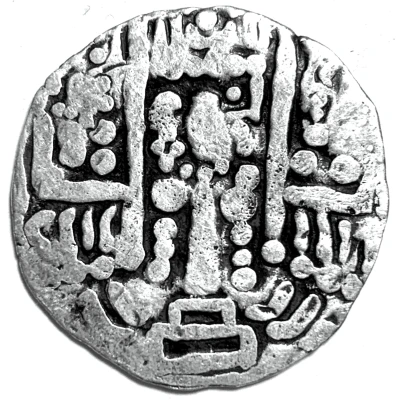


© Frenchlover
1 Drachm - al-Mahdi al-Fadl lillah Abbasid imitation of Bukhara drachmas ND
| Silver | 3.30 g | 25 mm |
| Issuer | Abbasid Caliphate |
|---|---|
| Type | Standard circulation coin |
| Years | 1380-1383 |
| Composition | Silver |
| Weight | 3.30 g |
| Diameter | 25 mm |
| Shape | Round (irregular) |
| Shape | Round (irregular) |
| Technique | Hammered |
| Technique | Hammered |
| Demonetized | Yes |
| Demonetized | Yes |
| Updated | 2024-10-05 |
| Numista | N#372166 |
|---|---|
| Rarity index | 97% |
Reverse
In the center of the coin is an altar with the head of Ahura Mazda to the right.
On both sides of the altar there are figures of mobeds (attendants).
Edge
Plain
Comment
References :Coins of central asia / Coins of Sogd / Bukharkhudaty BK-24
CHRONOLOGY OF THE BUKHĀRKHUDĀ ISSUES WITH ARAB NAMES:GOVERNORS, NOT CALIPHS (Michael L. Bates) - Type-4 (AH 166-169)
Al-Fadl must be al-Fadl b. Sulayman al-Tusi, who was appointed governor of Khurasan in 166 (782-83). Although he stayed on, this issue would have ended in 169 (785), when al-Mahdi died.
There does not seem to be any other coinage naming al-Fadl.
Interesting fact
One interesting fact about this coin is that it is an imitation of the Bukhara drachmas, which were popular silver coins issued by the Samanid Empire in Central Asia during the 10th century. The Abbasid Caliphate, which ruled much of the Islamic world at the time, imitated these coins in an effort to promote trade and commerce within their own empire. This imitation coin, the 1 Drachm - al-Mahdi al-Fadl lillah, was issued during the reign of Caliph al-Mahdi al-Fadl lillah (1380-1383) and features a similar design to the original Bukhara drachmas, including an inscription in Arabic and a depiction of a lion on the reverse side. Despite being an imitation, this coin still holds significant historical and numismatic value, offering a glimpse into the economic and cultural exchange networks of the medieval Islamic world.